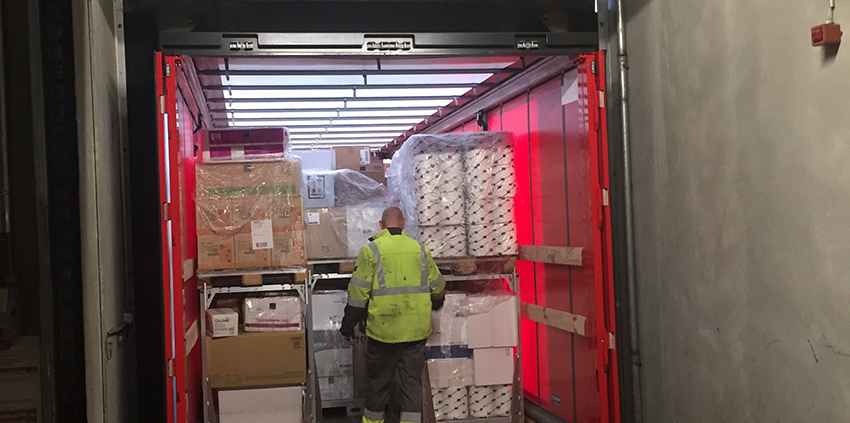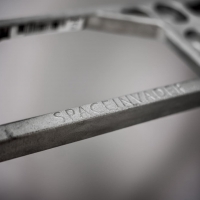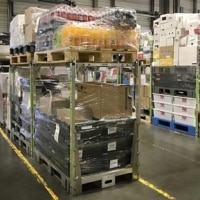Cargo-tetris can reduce CO2 from road transportation
By Steen Frederiksen, CEO, SpaceInvader.
There’s good news on the climate front! End 2018, EU’s respective Ministers of Climate agreed for the first time to lower the CO2 emissions from trucks, which currently account for 6% of EU’s total CO2 emissions, and one fourth of the transportation industry collectively. That is why reductions in the heavy transport sector are crucial for our climate. The ministers plan to make the goals binding, with a CO2 reduction of 30% in 2030. Already by 2025, they want to see a 15% reduction.
The million-dollar question remains: where should such reductions come from? Optimisation of existing transport capacity, or optimization of the energy efficiency from truck engines? Or perhaps from somewhere else?
The solution is found someplace between better planning, better technology and the will to try out new tools and overcoming the force of logistical habits.
According to Danish Climate Minister, Lars Christian Lilleholt, this is the first time EU imposes demands on tCO2 emissions from trucks, meaning the new trucks that will crowd Europe’s highways in the future must emit less CO2. He says the EU initiative is an important first step – even though he admits that he would have liked an even more ambitious benchmark.
Where should the transport industry concentrate its efforts? Are there any low-hanging fruit?
Let me give you a rundown of the options. What immediately comes to mind is having a look at engine- and fuel technology. Meaning, can you incorporate greener fuel types, and more fuel efficient engines in some parts of transportation. There is already a lot on offer in this regard, and technology is luckily evolving at a great pace. Today, you have the opportunity to fill your truck with biogas, both the liquid form (LNG) for long haul, or the condensed form (CNG) for short deliveries, for example sanitation vehicles or busses.
You also have other liquid biofuels, like biodiesel, where some types are more sustainable than others. Like most biofuels, it has its pros and cons, and it is important to consider these fuels in a perspective of their entire life cycle, where you both keep the direct and indirect effects on the climate in mind. For example, it would be prudent to consider whether it is wise to cut down rainforests in South East Asia to make room for palm trees whose palm oil go into manufacturing biodiesel.
Finally, you have electric trucks, where you have several exciting additions on the way from both Tesla and other manufacturers. Here, the driving range has until now been the primary concern, but also here technology is thankfully making great strides. As long as the electricity used to power electric vehicles is produced from sustainable sources, electrically-powered vehicles remain both an environmental- and emissions-friendly option.
However, other and cheaper solutions exist, and it is here we are most likely to come across the desired low-hanging fruit. Still, it might not be the solution that immediately springs to mind when one contemplates our climate challenges. Because what if you could optimise your transport, and cut down the large number of trucks driving around with half-empty holds? Would that not mean a significant cut in emissions?
Too many trucks go out half-empty
As much as 85% of all trucks go out half-empty. It compares to most of us driving alone on the highway in each our own car. Luckily, carpooling is becoming more popular. Already 30 years ago in California, you were only allowed in the fast lane if you had multiple people in the car. A law that gave rise to car sharing and carpooling. The reasoning behind it was a little loss of personal freedom was to be preferred over sitting in traffic. The environment and climate won and congestion eased.
Imagine if you could optimise the transportation industry so that all trucks were filled as much as weight limit and safety regulation would allow. This would demand the logistics industry improve their ability to “optimise their packing”, as well as plan and fill trucks, so that every time a truck left the depot, it would be packed and filled the best possible way. And safely, of course.
Cargotetris is part of the solution
Keeping that sense of optimisation in mind, I wonder why so many trucks drive around with a half-empty hold and plenty of empty air? One reason is the difficulty of stacking cargo high if time is of the essence and the load needs to be stabilised. That is why the vast majority of pallets are stacked to a maximum height of 140-180 cm, so they do not tip over during transit. In reality, they could easily be packed to height of 240 cm. But that would require stable double stacking.
And where does the climate and environment figure in all of this? Consider how many trucks we could take off our roads, if they were better packed and their cargo optimised? And let us not forget recent years’ price hikes in the transportation industry due to growing capacity issues caused by lack of drivers and the growth of e-commerce, to name just a few. It does not make it any easier for the industry. And now you can add EU’s latest climate demands to the list. Reduce your emissions. And do it quick.
Double stacking is part of the solution
The good news is that there is a solution for double stacking. It is a simple transport system, which consists of two lightweight pallet racks, that make it easy to stack two loaded pallets on top of each other. It is easy to handle, ergonomic, and it reduces the amount of cargo breakage considerably. The system was developed by Danish company SpaceInvader.
Norway’s biggest distributor of foodstuffs, ASKO, has begun using the SpaceInvader system, and tested it on a trial route in 2017. They reported a 20% CO2 reduction on one route alone, a roughly 500 km stretch between Trondheim and Mo i Rana.
Took away one entire delivery run per week
Normally, the company would make five weekly deliveries to the named destination, but with improved optimisation and double stacking ASKO has managed to take away one entire delivery run per week. Yearly, that means 52 fewer deliveries. On the bottom line, ASKO has saved more than a quarter of a million Danish kroner in addition to the mentioned 20% CO2 reduction. It is all smiles at ASKO, and they are now rolling it out in their organisation. Did I mention that ASKO aims to be carbon neutral by 2020? When it comes to reaching that goal, everything counts.
There is more to gain – for both the climate and the bottom line
Tænk på skaleringsmulighederne i dette scenarie. I det nævnte eksempel gik ASKO blot i gang med at bruge SpaceInvader systemet, og anvendte det ad hoc, hvor de havde paller med en højde på under 120 cm.
Consider the scaleability of the above case. Here, ASKO was just getting started with the SpaceInvader system and was using it on an ad hoc-basis with pallets no higher than 120 cm.
They are actually able to optimise even more. ASKO can make the decision to plan with all pallets being under 120 cm. and thereby double stackable as a standard practice, as well as incorporating SpaceInvader into their logistics culture. That way they will transport even more pallets with every truck.
They can also choose to go all in, and make SpaceInvader a part of their integrated logistics system and systematically plan by only packing pallets to a height of 120 cm. and thereby get as many double stacked pallets with every truck as possible.
All in all, there a great savings to be made with SpaceInvader, both economically, but also in emissions.
Read more about ASKO and SpaceInvader at www.spaceinvader.com or call us at +45 70 70 72 28.


